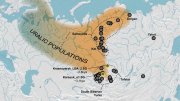The Faculty of Arts and Sciences (FAS) announced on Wednesday that its science doctoral programs would reduce admissions this year by 50 percent—a reprieve from even deeper proposed cuts, which had prompted an outcry from faculty members.
During the FAS faculty meeting earlier this month, Dean Hopi Hoekstra and other FAS leaders described the division’s $350 million deficit, which amounts to roughly 20 percent of its annual budget, as a structural problem that would require difficult and long-term cuts, including drastic reductions in Ph.D. admissions. According to reporting in The Crimson, FAS leaders were planning to cut the number of admitted science doctoral candidates by as much as 75 percent.
In an email on Wednesday to FAS colleagues, Hoekstra explained that she had backed off that initial number in part because “science departments quickly made clear that graduate education is their highest priority, and essential to the continuity of their research, especially for tenure track faculty.” Doctoral students also play a crucial role in teaching undergraduates at Harvard, and some Ph.D. programs include a teaching requirement.
Hoekstra also noted that as of October 15, the federal government had restored the majority of Harvard’s grant funding previously frozen by the Trump administration.
“With our circumstances meaningfully changed,” she wrote, “I charged the Research Continuity Committee (RCC) to develop a framework to reconsider graduate admissions to FAS science programs in a manner that supports the excellence of our graduate programs while also protecting the long-term financial health of the FAS mission.” The committee delivered its findings last week, she said, leading to the revised decision.
Programs seeking exceptions to the 50 percent decrease in Ph.D. admissions will be reviewed on a program-by-program basis, Hoekstra wrote, and FAS leaders will take into account non-federal funding and resources that those programs and faculty may be able to use.
Hoekstra wrote that the revised plan will “present incremental financial risk” for the FAS, which will be supported by an extra $250 million in “continuity funding,” which Harvard allocated earlier this year for University-wide research amid uncertainties about federal research funding.
“This year’s approach is not perfect,” Hoekstra wrote, “but will give us flexibility to meet pressing academic needs while maintaining prudent stewardship of our finances.” The number of Ph.D. slots available for next year’s admissions cycle is yet to be determined.








